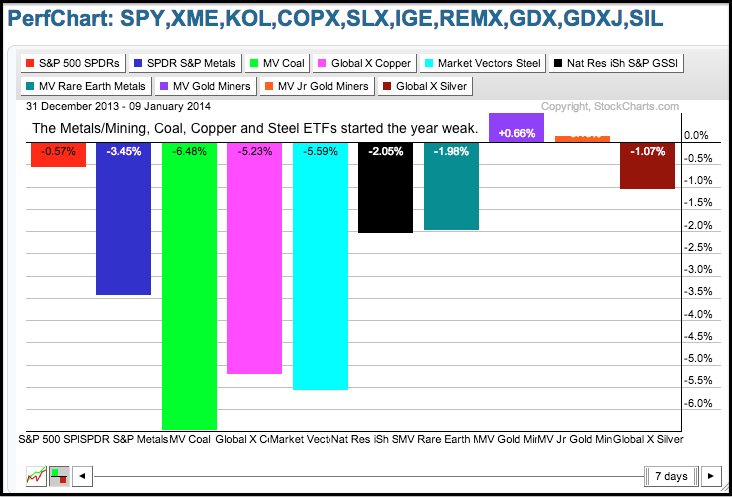Stocks continued their mixed ways with the Russell 2000 ETF (IWM) closing fractionally higher (-.03%) and the Nasdaq 100 ETF (QQQ) edging lower (-.33%). The technology sector led the way lower as networking, internet and semis came under selling pressure. Materials-related stocks extended their declines with the Coal ETF (KOL), Metals & Miners SPDR (XME) and Gold Miners ETF (GDX) falling over 1%. Except for gold miners, it has been a rough year for these materials-related industry groups. As the PerfChart below shows, the coal, copper and steel ETFs are down over 5% year-to-date. Perhaps the market is pricing in weakness in China and strength in the Dollar. Today could be a big day for the Dollar, which broke out earlier this week and could be turning a significant corner. A strong employment report would further the argument for tapering and this would be positive for the greenback.
**This chart analysis is for educational purposes only, and should not
be construed as a recommendation to buy, sell or sell-short said securities**
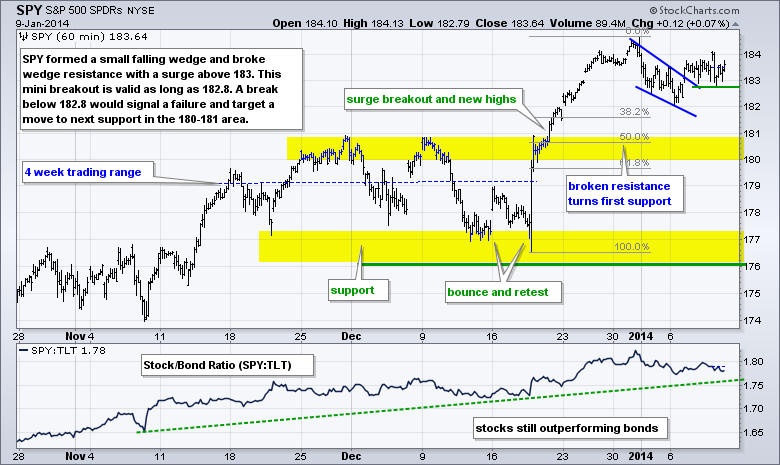
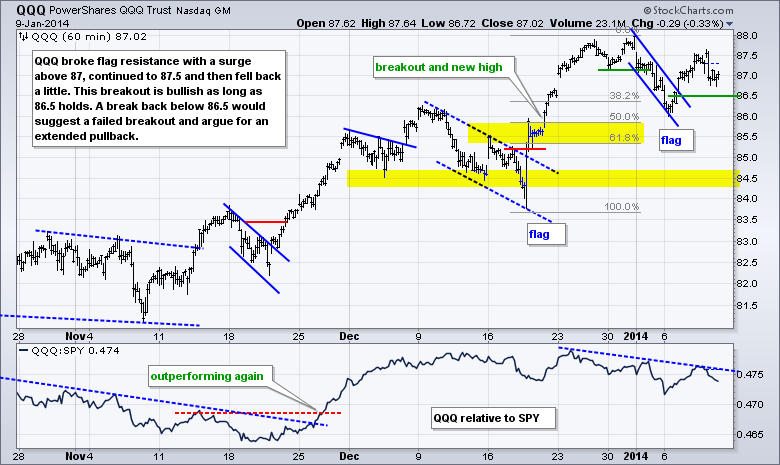
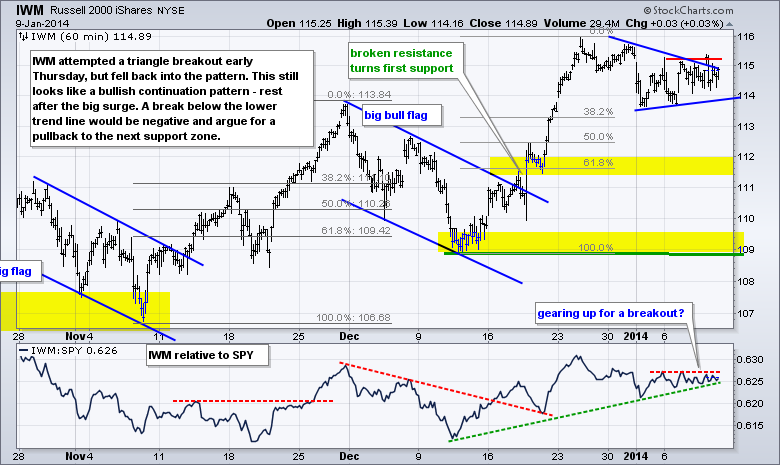
**************************************************************

**************************************************************
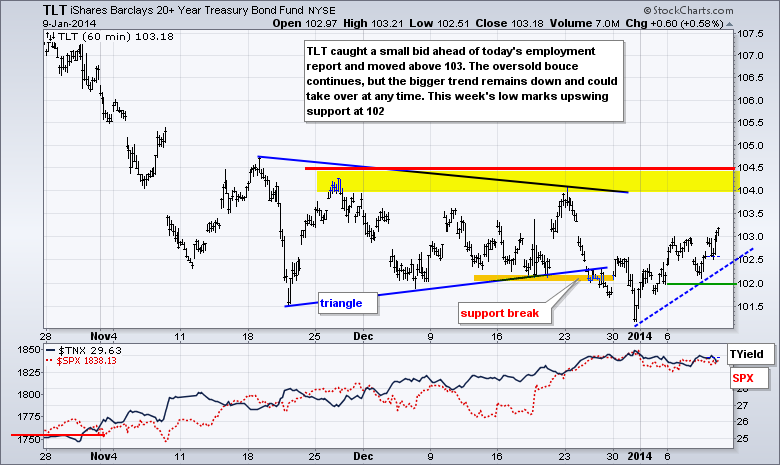
**************************************************************
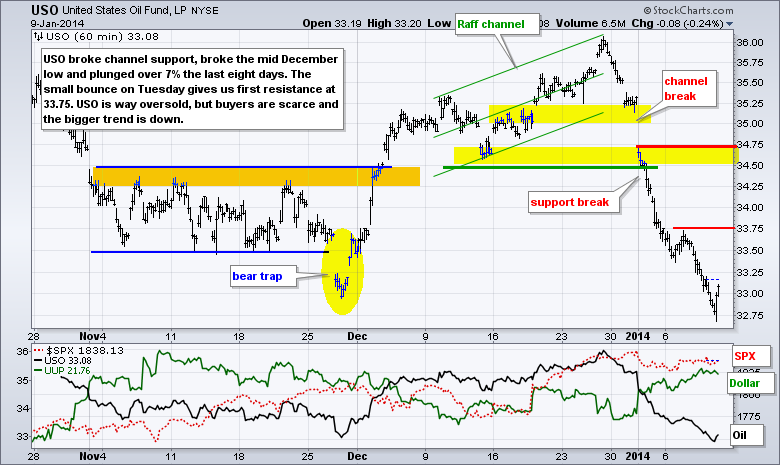
**************************************************************
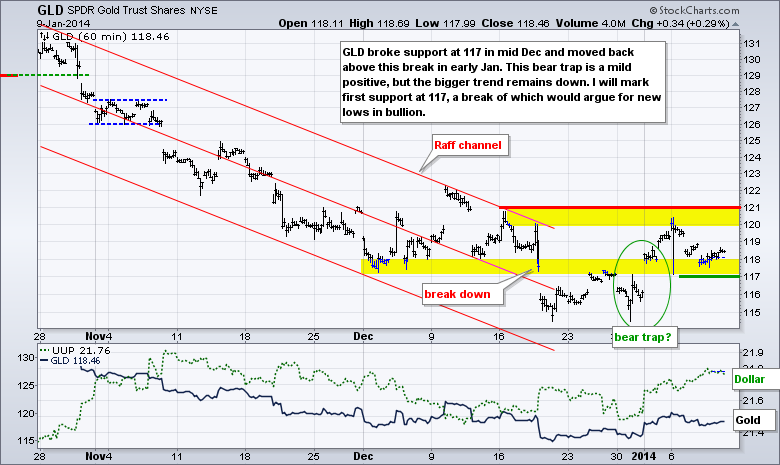
***************************************************************
Key Reports and Events (all times Eastern):
Fri - Jan 10 - 08:30 - Employment Report
Charts of Interest: Tuesday and Thursday
This commentary and charts-of-interest are designed to stimulate thinking. This analysis is
not a recommendation to buy, sell, hold or sell short any security (stock ETF or otherwise).
We all need to think for ourselves when it comes to trading our own accounts. First, it is
the only way to really learn. Second, we are the only ones responsible for our decisions.
Think of these charts as food for further analysis. Before making a trade, it is important
to have a plan. Plan the trade and trade the plan. Among other things, this includes setting
a trigger level, a target area and a stop-loss level. It is also important to plan for three
possible price movements: advance, decline or sideways. Have a plan for all three scenarios
BEFORE making the trade. Consider possible holding times. And finally, look at overall market
conditions and sector/industry performance.

